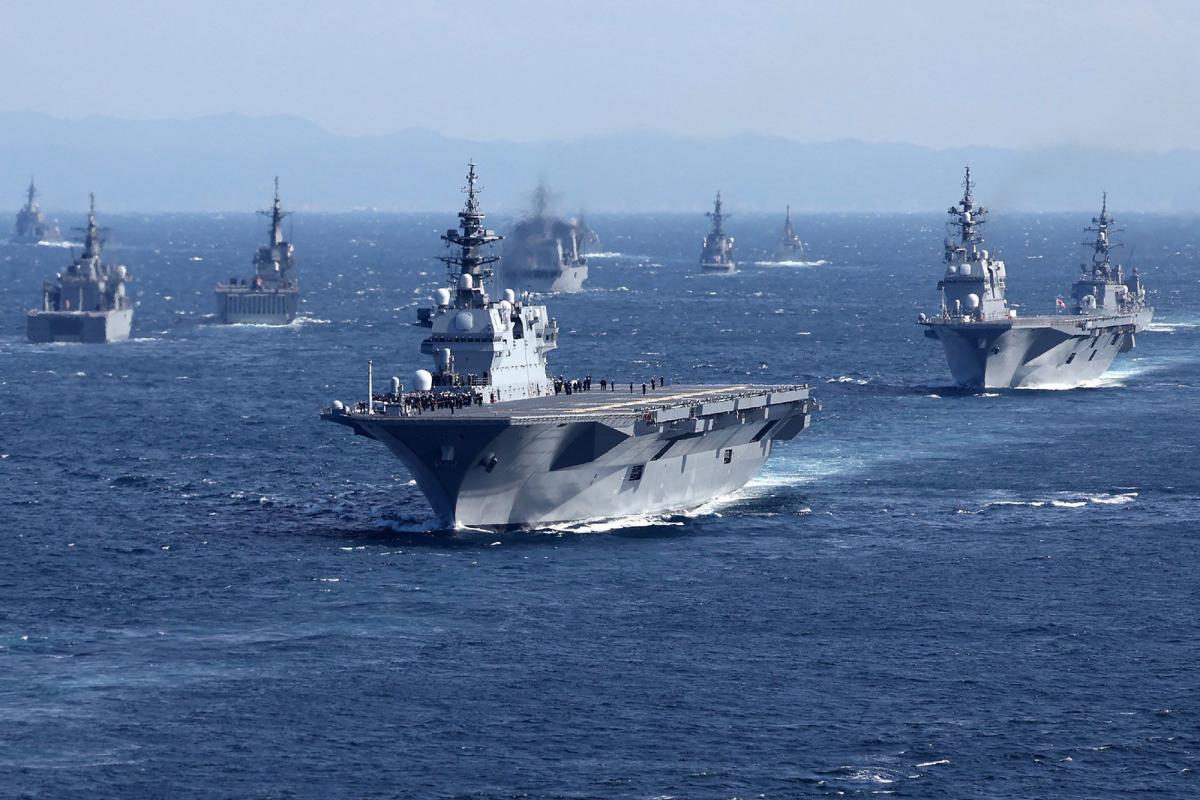
(Bloomberg) — Japan will describe China as an “unprecedented strategic challenge” in a new national security policy set to be approved as early this week, according to a draft seen by Bloomberg.
Most Read from Bloomberg
The new strategy, expected to get the green light from Prime Minister Fumio Kishida’s cabinet when it meets Friday, amounts to an unprecedented overhaul of the country’s security and defense policy. The revisions were triggered by Russia’s invasion of Ukraine, tensions over Taiwan that included Chinese missiles lobbed into waters close to Japanese islands and North Korea stepping up its missile launches.
Referring to a “remarkable” build-up of missile capability in the region, the government says in the document it is becoming difficult to deal with the situation simply by strengthening the country’s existing missile defense network. Japan treads carefully when it comes to the language it uses in describing the security concerns posed by its biggest trading partner China, while Tokyo has used the word “threat”’ in Defense Ministry documents in regard to the likes of North Korea.
The revisions to three documents governing Japan’s security and defense strategy call for acquiring “counter-strike capability” that would enable it to target an enemy’s military facilities, in a turning point for a country bound by a pacifist constitution since 1947.
The government plans to buy Lockheed Martin Corp.’s Tomahawk missiles for that purpose, according to the documents. It also intends to obtain sufficient supplies of missiles over the coming decade with ranges long enough to strike military assets in its three nuclear-armed neighbors that have been a focus of Tokyo’s concerns.
Japan will retain its “exclusively defensive” posture as well as its ban on nuclear weapons, according to the documents.
Kishida has already announced plans to increase defense spending by about 60% to ¥43 trillion ($315 billion) over the next five years. He’s facing opposition from within his ruling Liberal Democratic Party to his policy of raising taxes to fund part of the increase.
Rules governing the transfer of defense equipment will also be reviewed under the strategy, as Japan launches a three-way project with the UK and Italy to develop a next-generation stealth fighter jet.
Other items included in the documents are:
-
Establishment of a new organization overseeing cybersecurity policy
-
Strengthening of Japan’s Coast Guard
-
Infrastructure build-up based on the needs of the Self-Defense Forces and Coast Guard
-
Promoting economic security
-
Public-private cooperation to promote transfers of defense equipment; ensuring a strong defense manufacturing base by 2027
-
Development and manufacture of a hypersonic missile
-
Major increase needed in cyber and space defense personnel; no increase in the total number of SDF personnel, currently at 247,000
Most Read from Bloomberg Businessweek
©2022 Bloomberg L.P.




